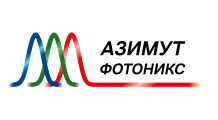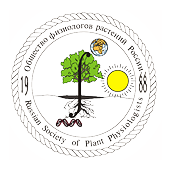Новости науки и практики // Сентябрь 2021

To what extent can rising [CO2] ameliorate plant drought stress?
De Kauwe et al. identify the experimental challenges and limitations to our understanding of plant responses to drought under eCO2. In particular, they argue that future studies need to move beyond exploring whether eCO2 played ‘a role’ or ‘no role’ in responses to drought, but instead more carefully consider the timescales and conditions that would induce an influence.
CALCIUM-DEPENDENT PROTEIN KINASE 29 modulates PIN-FORMED polarity and Arabidopsis development via its own phosphorylation code
PIN-FORMED (PIN)-mediated polar auxin transport is involved in key developmental processes in plants. Various internal and external cues influence plant development via the modulation of intracellular PIN polarity and, thus, the direction of polar auxin transport, but the mechanisms underlying these processes remain largely unknown. PIN proteins harbor a hydrophilic loop (HL) that has important regulatory functions. Lee et al. used the HL as bait in protein pulldown screening for modulators of intracellular PIN trafficking in Arabidopsis thaliana.
A metabolic daylength measurement system mediates winter photoperiodism in plants
Liu et al. use bioinformatics to identify photoperiod-induced genes in Arabidopsis. They show that one, PP2-A13, is expressed exclusively in, and required for, plant fitness in short, winter-like photoperiods. They create a real-time photoperiod reporter, using the PP2-A13 promoter driving luciferase, and show that photoperiodic regulation is independent of the canonical CO/FT mechanism for photoperiodic flowering.
Pole position: How plant cells polarize along the axes
Ramalho et al. explore how plant cells coordinately establish stable polarity axes aligned with the organ axes, highlighting similarities in the molecular logic used to polarize both plant and animal cells. They propose a classification system for plant cell polarity events and nomenclature guidelines. They also provide a deep phylogenetic analysis of polar proteins and discuss the evolution of polarity machineries in plants.
Growth-promoting, anti-aging retinal at the root of plant growth too
What do frog eggs have in common with 'anti-aging' creams? Their success depends on a group of chemical compounds called retinoids, which are capable of generating and re-generating tissues. A new study in plants shows that retinoids' tissue-generating capacities are also responsible for the appropriate development of roots.
https://www.sciencedaily.com/releases/2021/08/210826170136.htm
Plants evolved ability to actively control water-loss earlier than previously thought
New research has shed light on when plants first evolved the ability to respond to changing humidity in the air around them, and was probably a feature of a common ancestor of both flowering plants and ferns.
https://www.sciencedaily.com/releases/2021/08/210826111639.htm
Autophagy: The unlikely hero that balances zinc and iron in plants
Researchers highlight a novel function of autophagy in restoring zinc and iron balance in plants under nutrient stress conditions. Nutrient imbalances can adversely impact crop health and agricultural productivity. The trace elements zinc and iron are taken up by the same 'transporters' in plants; so, zinc deficiency can result in excess uptake of iron. How does the plant cope with this imbalance? Researchers reveal that autophagy, the process of intracellular self-degradation, may have an unexpected role in restoring zinc-iron balance in plants.
https://www.sciencedaily.com/releases/2021/08/210818083951.htm
Insights into the evolution of strigolactone signaling
Strigolactones are phytohormones that regulate various developmental processes inside the plant body, including shoot branching and root growth, cause the germination of seeds from root-parasitic plants, and initiate symbiosis between plants and arbuscular mycorrhizal fungi.
Fairy lanterns in focus
So-called fairy lanterns (Thismia) are among the most extraordinary flowering plants, yet little is known about their ecology. There has been a spate of recent species discoveries revealing a bewildering diversity of flower forms. But why these peculiar flowers are so diverse remains a mystery. Thorogood and Yunoh review recent discoveries, placing focus on Southeast Asia as a center of diversity of fairy lanterns.
400-million-year-old fossil reveals how first roots emerged in Earth’s early plants
The ancient plant’s roots developed in an ‘entirely different way’ than how they grow in modern plants.
Cell Biology and Gene Regulation of Ultraviolet Radiation Mitigation Strategies in the Cyanobacterium Nostoc Punctiforme
Scientist studied the molecular mechanisms of ultraviolet radiation mitigation (UVR) in the terrestrial cyanobacterium Nostoc punctiforme ATCC 29133, which produces the indole-alkaloid sunscreen scytonemin and differentiates into motile filaments (hormogonia). While the early stages of scytonemin biosynthesis were known, the late stages were not.
Цветущий хищник
Новое хищное растение питается во время цветения.
https://www.nkj.ru/news/41937/
Host match improves root microbiome growth
Roots of different plant species are colonized by distinct microbiota, even when grown in the same soil. A comprehensive combination of experimental manipulation of plant species, plant mutations, plant signalling, community composition and order of community application reveals how community assembly differs among plant species.
https://www.nature.com/articles/s41564-021-00957-1
Global analysis of lysine acetylation in soybean leaves
Protein lysine acetylation (Kac) is an important post-translational modification in both animal and plant cells. Global Kac identification has been performed at the proteomic level in various species. However, the study of Kac in oil and resource plant species is relatively limited.
https://www.nature.com/articles/s41598-021-97338-9
Новости
Новости науки и практики // Апрель 2024
Обзор научных новостей, опубликованных во всемирной паутине за последний месяцФосфорилирование плазматической мембраны H+-АТФазы Thr881 (треонин) участвует в светоиндуцированном открывании устьиц
Ученые из Университета Нагои (Nagoya University) и Института трансформирующих биомолекул (WPI-ITbM) обнаружили новый ...Научная конференция «Photosynthesis and Hydrogen Energy Research for Sustainability – 2024»
Приглашаем Вас принять участие в XII международной научной конференции


Объявления
Записей не найдено.



